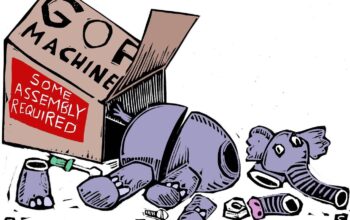It is not the hoax of climate change, stupid. It is the lack of government management of the forest that cause the large number and added intensity of forest fires.
““Our findings support the idea that large-diameter fuel build-up is a strong contributor to fire severity,” said Audrey Odwuor, a Ph.D. candidate in the UCI Department of Earth System Science and the lead author of the new study.
Researchers have known for decades that an increasing number of trees and an increasing abundance of dead plant matter on forest floors are the things making California wildfires more severe – but until now it was unclear what kinds of plant debris contribute most to a fire.
When you make it a crime to cut tress or clean the forest you get intense forest fires. Government and the media, along with the grifter academics need to stop lying about the root cause of forest fires. The public knows climate change is a hoax—take responsibility for YOUR inaction.
UC Irvine scientists reveal what fuels wildfires in Sierra Nevada Mountains

UCI News, 9/25/23 https://news.uci.edu/2023/09/25/uc-irvine-scientists-reveal-what-fuels-wildfires-in-sierra-nevada-mountains/
The work could help improve California’s wildfire management efforts
Irvine, Calif., Sept. 25, 2023 — Wildfires in California, exacerbated by human-driven climate change, are getting more severe. To better manage them, there’s a growing need to know exactly what fuels the blazes after they ignite. In a study published in Environmental Research Letters, Earth system scientists at the University of California, Irvine report that one of the chief fuels of wildfires in California’s Sierra Nevada mountains is the decades-old remains of large trees.
“Our findings support the idea that large-diameter fuel build-up is a strong contributor to fire severity,” said Audrey Odwuor, a Ph.D. candidate in the UCI Department of Earth System Science and the lead author of the new study.
Researchers have known for decades that an increasing number of trees and an increasing abundance of dead plant matter on forest floors are the things making California wildfires more severe – but until now it was unclear what kinds of plant debris contribute most to a fire.
To tackle the question, Odwuor and two of the study’s co-authors – James Randerson, professor of Earth system science at UCI, and Alondra Moreno from the California Air Resources Board – drove a mobile lab owned and operated by the lab of study co-author and UCI alumna Francesca Hopkins at UC Riverside, to the southern Sierra Nevada mountains during 2021’s KNP Complex Fire.
The KNP Complex Fire burned almost 90,000 acres in California’s Sequoia and Kings Canyon National Parks. In the fire’s smoke, the team took samples of particulate matter-laden air and analyzed the samples for their radiocarbon content at UCI’s W.M. Keck Accelerator Mass Spectrometer facility with co-author and UCI Earth system science professor Claudia Czimczik.
Different fuel types, explained Czimczik, have different radiocarbon signatures, such that when they analyzed the smoke they discovered radiocarbon values associated with large fuel sources like fallen tree logs.
“What we did was pretty distinctive, as we were able to identify fuel sources by measuring the wildfire smoke,” said Czimczik. “Our approach provides what we think of as an integrated picture of the fire because we’re sampling smoke produced over the course of the fire that has been transported downwind.”
The team also saw elevated levels of particulate matter that is 2.5 microns in diameter or less, which includes particles that, if inhaled, are small enough to absorb into the bloodstream.
The preponderance of large-diameter fuels is new in western forests. “We’re really in a situation that’s a consequence of both management strategies and climate warming since European-American settlement began in California,” Odwuor said. “These fuels are building up on the forest floor over periods of decades, which is not typically how these forests were maintained.”
It’s information that, according to Odwuor, could help California better manage its wildfires.
“The knowledge that large-diameter fuels drive fires and fire emissions – at least in the KNP Complex Fire – can be useful for knowing which fuels to target with fuel treatments and what might end up in the smoke from both wildfires and prescribed fire,” said Odwuor. “The idea is that because we can’t control the climate, we can only do our best to manage the fuels, which will theoretically have an impact on fire severity and the composition of the smoke.”
But the solution isn’t as straightforward as removing trees from forest floors, because, among other things, they provide habitat for wildlife. That, and “once you get them out, where do you send them? There are only so many mills in California that can handle all the wood,” Odwuor said.
Where the new knowledge could be helpful is with prescribed burns, wherein teams burn tracks of forest in a planned fashion with the aim of reducing the amount of fuel available for future wildfires.
“We’re hoping to build some urgency for these management strategies,” said Odwuor.




It should be noted that large dead trees lying on the forest floor, if dead over a year, are not salvageable or marketable any longer. The wood will have started to rot and crack. The only use from that point is as renewable woody biomass. Unfortunately there is not a funding mechanism for this in most cases. The public needs to apply pressure for removal of dead, fallen trees from public lands as a deterrent for future wildfires. Some of the funds set aside for “fire suppression” could be rerouted to fuels removal. Without the funding to chip and haul, this will just be another study that is just that.